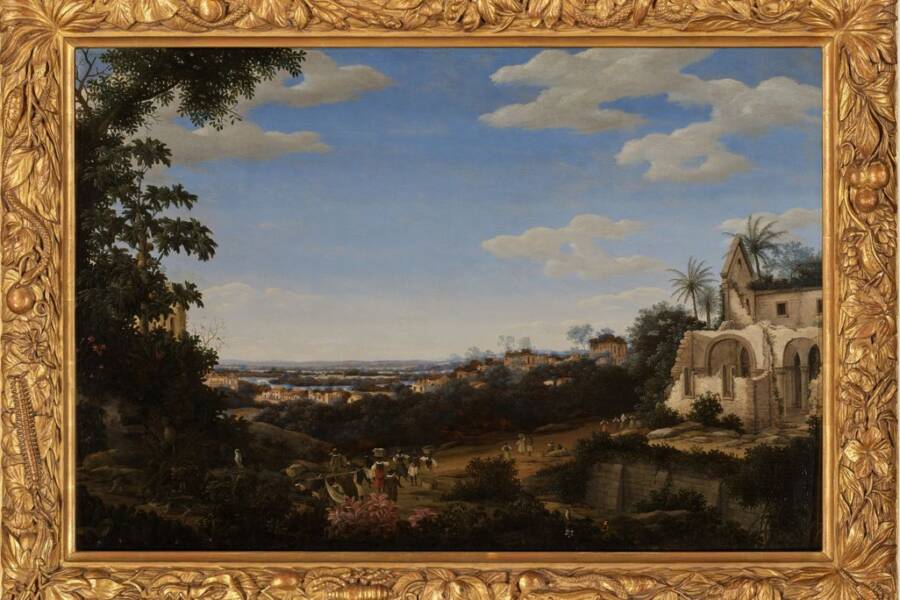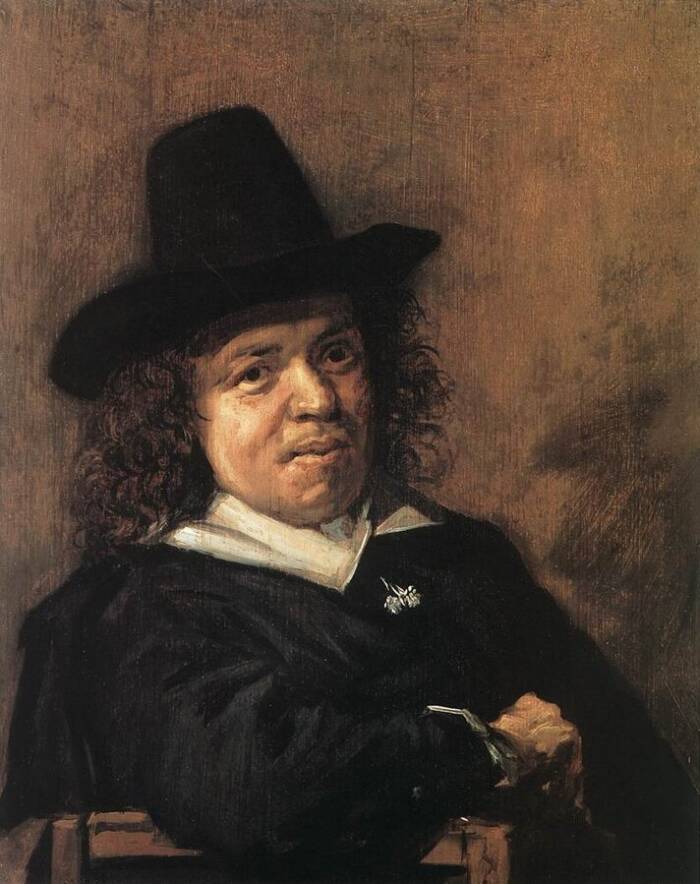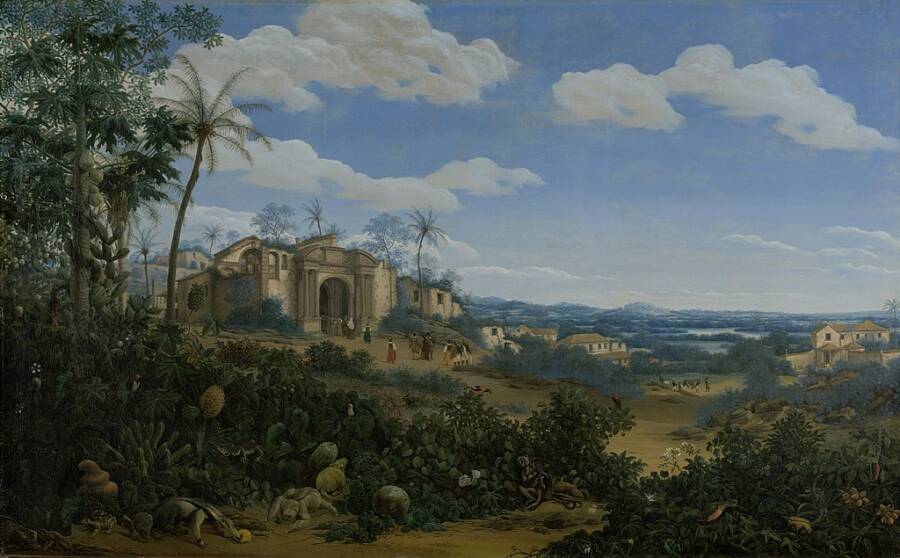After the painting was painstakingly restored, it was revealed to be the 1666 masterpiece "View of Olinda, Brazil" by Dutch artist Frans Post, one of the few European painters to visit the Americas in the 17th century.

Sotheby’sThe 1666 painting by Dutch artist Frans Post, “View of Olinda, Brazil,” that was found in a Connecticut barn attic.
In 1998, a dirty, dust-covered painting was found in the attic of a barn in Connecticut. The painting would soon turn out to be a lost masterwork by 17th-century Dutch artist Frans Post.
Known as “View of Olinda, Brazil, with Ruins of the Jesuit Church,” the painting underwent restoration at the urging of George Wachter, the chairman of Sotheby’s North and South America, and was soon returned to its former glory.
Now, the painting has sold at auction for $7 million after just two minutes of bidding.
How Frans Post’s “View Of Olinda, Brazil” Was Transformed After Its Rediscovery
When the painting was discovered in the barn attic, it was unrecognizable, Wachter remembered.
“It was filthy, black, dirty,” Wachter said, according to Robb Report. “You could hardly see it.”
But Wachter had a hunch that the unknown painting hidden under the grime would be spectacular, and he convinced two collectors to believe in his vision and buy the work for $2.2 million.
“I said, ‘This is a killer,'” Wachter recalled. “And so they trusted me because they couldn’t see it. It was jet black.”
Wachter got the premier conservator of Dutch and Flemish paintings in New York, Nancy Krieg, to help restore the painting. Krieg used a process of cleaning the painting with cotton swabs and solvents, working to reveal a Brazilian landscape behind the dust and grime.
According to David Pollack, senior vice president and head of Old Master paintings at the Sotheby’s auction house, art restoration is painstaking work.
“It’s an art and a science, the process of cleaning,” Pollack said.
Slowly but surely, little bits of the painting began to be revealed as Krieg worked to restore the painting. The sky became incredibly blue, ruins of a church could be seen in the foreground, with people and animals then emerging around it.
“There was a little anteater in the corner, and all these animals running around and all the different kinds of figures,” Wachter said.
Ultimately, Frans Post’s “View from Olinda, Brazil” was revealed in all its splendor, just as it had looked more than 300 years before.
Now, more than a quarter-century later, the painting has been sold again. Before auction, the 23″x35″ painting had an initial estimated selling price of $6 million to $8 million, and it eventually sold at Sotheby’s for $7 million. This selling price was a new record for Post, whose previously highest-value work sold for $4.5 million in 1997.
Why Post’s Experience In Brazil Made Him One Of His Era’s Most Unique Artists

Wikimedia CommonsFrans Post arrived in Brazil in 1637 at age 24 and lived there for the next eight years.
Frans Post was born in 1612 in the Dutch town of Haarlem, before making his way to what was then a Dutch colony in Brazil at the age of 24. Post’s time in Brazil would leave a lasting impression on his art.
It was during his eight years in Brazil that Post would be influenced to create paintings depicting the region’s landscapes and people, even after returning home to the Netherlands. Post became one of the first European artists to use the New World as his inspiration.
Originally, Post’s audience consisted of people who had been to Brazil and wanted an accurate depiction of life in the colony. However, over time, this focus shifted and people began to desire idealized depictions of Brazil rather than accurate native landscapes.

Wikimedia CommonsFrans Post’s other painting known as “View of Olinda,” this one from 1662.
“View of Olinda, Brazil, with Ruins of the Jesuit Church,” represents the phase in Post’s career of presenting exotic imagery of Brazilian landscapes to his audience. Works like this painting were valuable even during Post’s lifetime.
“He was painting for a very open, ready market,” said Pollack. “This was his calling card, these views of Brazil. And to have something on this scale certainly ranks it in the top tier, no doubt.”
How exactly the “View of Olinda, Brazil,” ended up in a barn attic in Connecticut is uncertain. According to Wachter, it could’ve been there for more than 100 years before it was rediscovered.
Before finding its way to Connecticut, the painting moved through Parisian art collections throughout the 18th century. At one time, it was owned by Napoleon Bonaparte’s uncle, Cardinal Joseph Fesch.
And now, upon this latest sale, this rediscovered masterwork is continuing its dramatic journey through history.
After reading about this restored Dutch painting, discover the story of the Spanish town that was left outraged by a statue restoration. Then, learn about the lost Van Dyck painting that was found in a shed.





